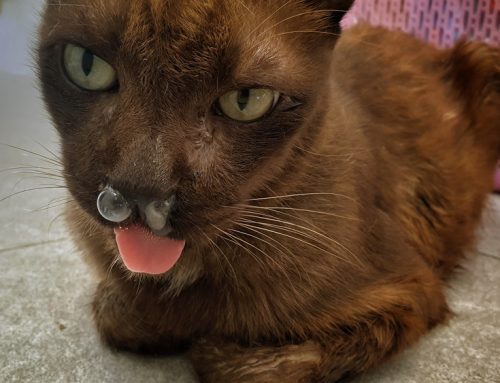When it comes to cats, you could easily say that sleek design meets high function in virtually every way. Whether it’s their hunting prowess or super self defense capabilities, playtime antics to serious snuggle time, cats know what they want and have the power and drive to get it.
Of course, their distinctly developed anatomy has a lot to do with the beautiful, graceful antics we associate with cats. Springy back legs, excellent hearing, and sharp eyesight notwithstanding, cat whiskers are responsible for helping felines communicate, navigate the dark and figure out small spaces.
A Microscopic View
Nearly all mammals have whiskers in some form or another, but cat whiskers lead the pack. Fully equipped to pick up environmental signals, approximately 12 cat whiskers jut out on either side of the nose, below the chin, and above the eyes. They can also be found on the backsides of their front legs!
Also called vibrissae, cat whiskers have very sensitive proprioceptors at the end that sense a cat’s surroundings. These nerves send powerful signals to the brain. In other words, whiskers help cats move around, stay out of trouble, and even find food.
Exponential Vision
Cat whiskers are essential when it comes to jumping and land with accuracy, as well as keeping them out of too-tight spaces. Because they extend to the same width as their body from tip to tip, cat whiskers reduce the odds of getting trapped by sending signals to the brain to retreat if space becomes limited. They also:
- Detect air currents
- Help cats “see” by feeling around in low light
- Protect the eyes by triggering a blink reflex
- Communicate with other cats
- Position the right angle for a fatal bite
Super Powers
The proprioceptors on whisker tips can be unconsciously focused on areas where cats are exploring. As such, whiskers can become sort of overloaded with stimuli. Whisker soreness, fatigue and even frustration can occur from ongoing transference of information to the brain.
You can provide shallow water/food bowls o help with this. Also, be careful not to over touch the ends of their whiskers, or you may notice that your cat avoids you It’s also not entirely known how cutting or pulling cat whiskers out can affect agility and navigation, but it’s always advised to simply leave cat whiskers alone. They do fall out of their own accord once in awhile.
Speaking Volumes
Cat whiskers move or twitch based on their surroundings. They appear slack when a cat is relatively relaxed, calm and happy. Otherwise, you may see tautness or rigidity when frightened or confronted, or standing on edge when alert or focused.
Cat Whiskers
When we observe and admire cats, their whiskers are very prominent features. Looking out and caring for these incredibly sensitive body parts is important to their general health and wellbeing.
If you have any questions about your cat’s health, please let us know We’re always here for you at Town & Country Animal Hospital.







Leave A Comment